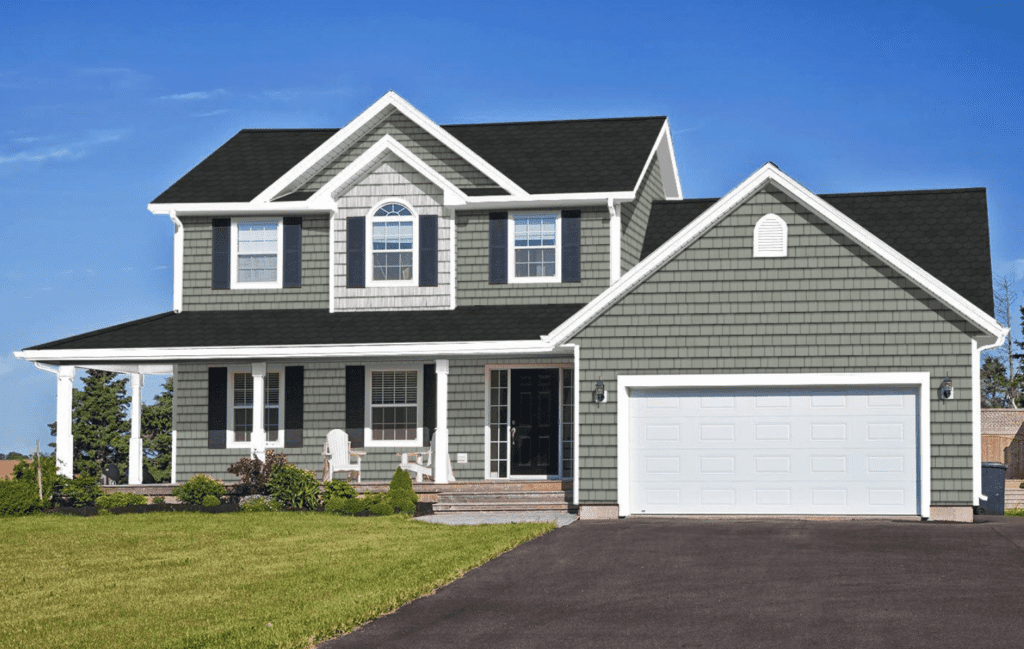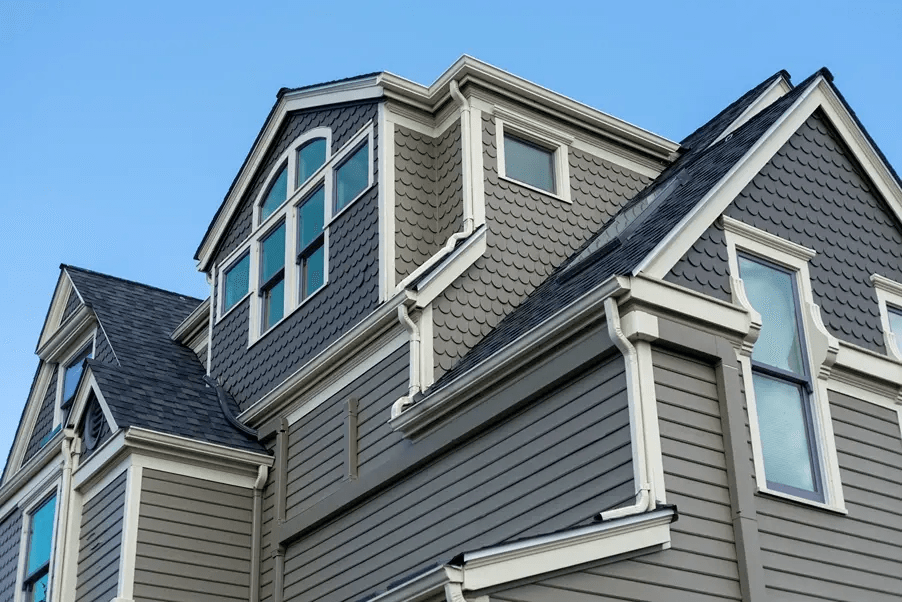New siding for homes: Frequent Cladding Issues and How to Fix Them
Siding and trim installation: Experienced Outside Cladding Specialists Can Boost The Durability And Look Of Your Home
Kinds Of Siding Materials
When selecting the ideal siding material, siding specialists typically navigate a maze of choices, each with its own personality and appeal. Have you ever questioned why some homes appear to use their outside like a tailored suit, while others look like they've borrowed an outfit? The secret lies in the material.
Wood Siding: Timeless with Character
Wood siding has this ageless allure, similar to relaxing cottages and rustic cabins. It breathes heat and credibility, but it demands care, much like a treasured book that requires gentle handling. Specialists often remind homeowners: "Wood sings a lovely tune, but just if here you keep it well-tuned."
- Types: Cedar, Pine, Redwood
- Pros: Natural insulation, aesthetic flexibility
- Cons: Vulnerable to moisture, requires routine maintenance
Vinyl Siding: The Popular Workhorse
Ask any siding specialist about vinyl, and you'll hear about its durability and ease. It resembles the trustworthy good friend who's constantly ready to help, rain or shine. Vinyl doesn't require much attention, yet it uses a wide combination of colors and designs. Is benefit worth the sacrifice of that authentic texture?
- Durability: Withstands fading, cracking, and pests
- Setup: Faster and more cost-efficient
- Environmental effect: Less environment-friendly due to plastic structure
Fiber Cement: The Modern Chameleon
Picture a siding material that imitates wood's appeal however laughs off wetness and fire. Fiber cement is that shape-shifter in the siding world, impressing specialists and house owners alike. It's a blend of cement, sand, and cellulose fibers-- crafted to endure.
| Feature | Fiber Cement | Wood | Vinyl |
|---|---|---|---|
| Upkeep | Low | High | Low |
| Sturdiness | High | Moderate | Moderate |
| Look | Varied textures | Natural grain | Smooth or wood-like |
Metal Siding: Industrial Edge
Metal siding often captures the eye with its sleek, modern ambiance. It's the bold declaration piece for modern homes. It can be a double-edged sword. While it boasts incredible durability, its cold touch and sound throughout rainstorms can amaze the unprepared.
- Products: Aluminum, Steel, Copper
- Strengths: Fire resistance, low upkeep
- Challenges: Damage vulnerability, thermal conductivity
Which product fits your home's story? Siding specialists advise us that understanding these choices is more than a checklist-- it's about matching character, environment, and way of life. After all, your home's exterior is the very first chapter in the tale you tell the world.
Setup Methods and Finest Practices
When it comes to siding installation, the devil truly conceals in the information. Have you ever discovered a home where the siding appears to peel or warp after a single season? That subtle imperfection often traces back to poor attachment or neglected wetness barriers. Precision isn't just a luxury-- it's the backbone of durability. The question is: how can specialists guarantee perfect execution each time?
Mastering the Art of Securing
Among the most neglected aspects in siding work is the option and positioning of fasteners. Screws or nails that are either too tight or too loose can trigger panels to buckle or become loose, specifically with products like vinyl or fiber cement. A pro idea: always leave a slight gap to enable natural growth and contraction. This tiny breathing room prevents warping and cracking down the line.
- Usage corrosion-resistant fasteners to avoid rust stains and weakening over time.
- Set up nails at a minor angle to improve holding power.
- Never ever drive fasteners too deep; countersinking ruins the siding's capability to bend.
Moisture Management: The Unnoticeable Guardian
Did you understand that incorrect wetness control is the silent assassin of siding systems? Water invasion, frequently unnoticeable at initially, can trigger underlying rot and mold. A seasoned siding contractor never ever skips installing a top quality weather-resistant barrier underneath the siding. This layer imitates armor, pushing back moisture while enabling vapor to escape.
| Typical Wetness Security Techniques | Why It Matters |
|---|---|
| Home Wrap Setup | Avoids rain infiltration and enhances energy efficiency |
| Flashing Around Openings | Reroutes water away from windows, doors, and corners |
| Weep Holes in Bottom Trim | Allows caught moisture to escape, avoiding buildup |
Precision Cutting and Positioning
Ever question why some siding jobs appear like works of art while others appear haphazard? The secret depend on precise measuring and cutting. Utilizing laser levels rather of conventional tools can conserve hours and guarantee completely straight lines. Keep in mind, siding isn't just about covering walls-- it's about enhancing curb appeal with seamless positioning.
- Measure twice, cut as soon as: verify all dimensions before cutting.
- Usage sharp blades for clean edges-- dull tools trigger splintering.
- Keep consistent panel spacing to enable thermal motion.
In the end, the craftsmanship behind siding installation reflects a deep understanding of materials and environment. How frequently do you stop briefly to think about the unnoticeable work underneath those panels? It's a dance between durability and aesthetic appeals, performed best when competence satisfies attention to every minute information.
Upkeep and Repair Tips for Siding
Ever observed how a tiny crack in your siding can rapidly snowball into a full-blown headache? Overlooking that small fissure may seem harmless, however water invasion and bug infiltration prowl just beneath the surface area, waiting to create chaos. The secret to maintaining your home's outside depends on watchfulness and prompt intervention.
Finding Difficulty Before It Escalates
Routine inspections, particularly after harsh weather, are non-negotiable. Try to find:
- Loose panels that may flap or shift in the wind.
- Staining, which typically signifies wetness trapped behind the siding.
- Peeling paint or bubbling, a sure indication of underlying damage.
- Warping or swelling, especially on wood or fiber cement siding.
One house owner once dismissed a small bulge, just to find weeks later that termites had made themselves rather comfy behind the siding. Moral of the story? Don't let subtle symptoms deceive you.
Proactive Repair Work Techniques
When it comes to repair work, time is your ally. Delaying the repair typically indicates more intrusive-- and pricey-- work later on. Here's a detailed approach that siding specialists swear by:
- Tidy the location completely to examine the full scope of damage. Dirt and debris can mask the true extent.
- Remove harmed areas carefully to avoid harming surrounding products.
- Use suitable replacement pieces to ensure smooth integration and keep structural stability.
- Seal all joints and edges with premium, weather-resistant caulk or sealant.
- Repaint or refinish to bring back defense and curb appeal.
Expert Tips for Longevity

Here are some lesser-known techniques of the trade that can extend the life of your siding:
| Pointer | Description |
|---|---|
| Preserve proper drainage | Ensure rain gutters and downspouts direct water away to prevent moisture buildup behind siding. |
| Aerate your attic | Good airflow decreases humidity levels that can deteriorate siding products from the within out. |
| Trim plants | Keep shrubs and tree branches at bay. Plants can trap moisture and welcome pests. |
| Use a soft brush for cleaning | Avoid high-pressure washing, which can harm siding surfaces and force water into seams. |
When to Call a Professional

Not every imperfection calls for a professional, however some indications are unmistakable:
- Large-scale warping or sagging that compromises siding positioning.
- Persistent moisture stains that resist drying.
- Noticeable mold or mildew growth indicating ongoing water invasion.
- Damage affecting insulation or structural parts behind the siding.
Remember, tackling small repair work yourself can save cash, however acknowledging when expert intervention is required secures your financial investment. Siding does more than gown up your home-- it acts as a fortress versus the elements.
Environmental Effect and Sustainability Factors To Consider
When selecting siding, have you ever stopped briefly to consider the ecological footprint Behind? It's more than just aesthetics or durability-- what lies below the surface often informs a story about resource usage and waste. Lots of siding products feature covert ecological costs, from the extraction of basic materials to manufacturing emissions and disposal obstacles.
One anecdote from the field stands out: A house owner chose vinyl siding for its low upfront cost however didn't realize that its non-biodegradable nature would make complex disposal decades later. That glossy outside masked an ecological gamble, prompting professionals to reconsider recommendations on sustainable alternatives.
Product Choice: Beyond Surface Appeal
Wood siding frequently gets praise for its renewability, but not all wood is created equivalent. Sourcing from sustainably managed forests can drastically reduce ecological stress. On the other hand, composite sidings might include recycled material, however the manufacturing process could still be energy-intensive. What's the balance?
- Recycled content portion: The higher, the much better for sustainability metrics.
- Embodied energy: How much energy is utilized from raw product extraction through to setup?
- Durability and maintenance: Materials that last longer lower waste and replacement frequency.
Installation and Waste Management Tips
Experienced siding contractors typically highlight reducing waste on-site. Instead of a scattergun method, precise measurements and pre-cutting can conserve substantial material. Ever discovered stacks of scrap discarded quickly after setup? That's lost chance-- not simply for your wallet, but for the planet.
- Plan cuts thoroughly to lower offcuts.
- Reuse or recycle remaining pieces anywhere possible.
- Pick fasteners and adhesives with low unstable organic compound (VOC) emissions.
Resilience's Double-Edged Sword
Here lies a paradox: resilient siding implies less frequent replacements, which is great for sustainability. Some highly long lasting products need energy-intensive production or include chemicals hazardous to ecosystems. How to select sensibly? In practice, specialists weigh the whole lifecycle impact rather than simply the surface benefits.
| Material | Environmental Advantage | Factor to consider |
|---|---|---|
| Cedar | Eco-friendly, renewable | Requires maintenance, potential for chemical treatments |
| Fiber Cement | Lasting, fireproof | High embodied energy, dust issues throughout cutting |
| Vinyl | Low maintenance | Non-recyclable, harmful when burned |
Ultimately, the art of siding setup intertwines with ecological mindfulness. Can your siding be both a protective shield and a peaceful guardian of natural resources? With thoughtful choices and skilled workmanship, it can.